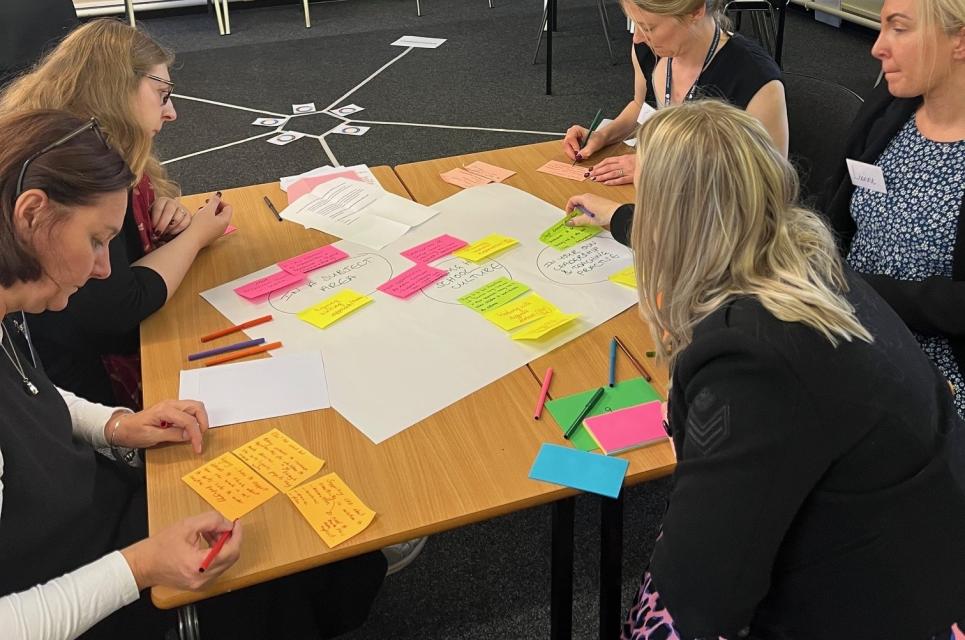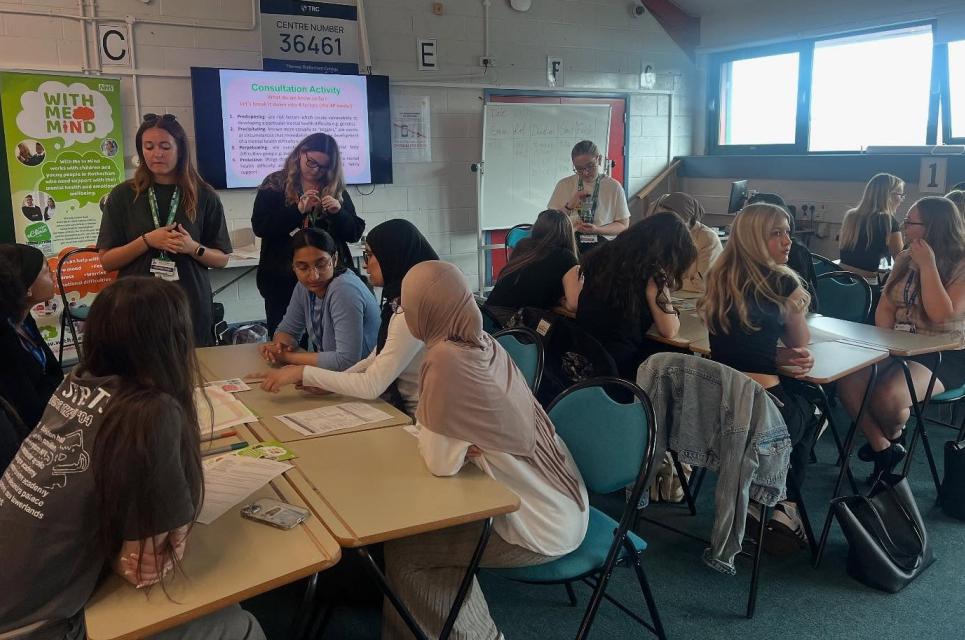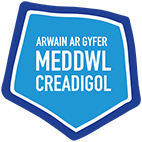From CPD to Change: How creative thinking shaped a new peer mentor programme at Thomas Rotherham College

When our college audited our provision against the World Economic Forum’s (WEF) Skills Matrix and Future of Jobs report, we discovered that creative thinking, one of the fastest-growing and most in-demand skills, was the least embedded in our curriculum.
We reached out to Rotherham Metropolitan Borough Council's Children's Capital of Culture, to explore how to address this gap. The Children's Capital of Culture initiative is a vision that came from the children and young people of Rotherham and it’s supporting them to play an active role in the borough's future, through creativity.
Conversations quickly developed and led to a partnership between ourselves at Inspire Learning Trust, Children’s Capital of Culture, and the international charity Creativity, Culture and Education (CCE) to deliver a series of six twilight CPD sessions on developing creative thinking, open to all Rotherham schools.
CCE’s approach is simple but powerful - creative thinking should be woven through the curriculum as “the way we do things around here.” Embedding it not only develops broader skills but also builds engagement, confidence, wellbeing, and teacher readiness to innovate.
Even at this early stage, the CPD is shaping how we work and how our students lead.
Example in action: Co-creating a Peer Mentor programme
Alongside our NHS Mental Health Support Team (With Me in Mind) we recently redesigned our mental health and wellbeing provision into a stepped, targeted, and specialist model, while aligning our universal offer with the NHS Five Steps to Wellbeing. As part of this, we created a new intervention: Mental Health Peer Mentors.
Twenty-five students embarked on a three-day work placement to develop their understanding of mental health roles in the NHS and gain basic counselling skills. On the third day, they worked with college leaders and our mental health and wellbeing team, TRConnect, to co-design the new peer mentoring provision.
We used and adapted CCE’s Diamond 9 Purpose of School activity to collaboratively define the ethics, values, and behaviours of a peer mentor.
The process unfolded like this:
Generating ideas – Students worked in groups to write fifteen post-it notes each about what the role should involve.
Prioritising – Each group reviewed another’s 15 ideas, narrowing them down to 9 key points.
Ranking – Groups returned to their own 9 ideas and ranked them in a diamond formation from most to least important.
Sharing – Each group presented their top three (or next in line if already shared), ensuring all perspectives were included.
Final selections – Groups chose one more from their remaining ideas to add to the collective pool.
From ideas to action – With 15 agreed post-its on the wall, our Head of HR joined the session and worked with students to turn their priorities into a formal job description.
By the end of the day, we had not only co-designed a meaningful student leadership role but also demonstrated to learners that their voices can shape policy, structure, and practice within the college.

Why this matters
The CPD gave us both a method and a mindset to embed creative thinking into high-stakes, real-world decision-making. For the students, it was a live experience in collaboration, negotiation, and innovation, the very skills the WEF identifies as vital for the future of work.
It also provided an authentic opportunity for students to practise what Professor Bill Lucas calls the five creative habits:
Inquisitive – asking questions about what the role could and should be.
Imaginative – generating fresh ideas for how peer mentoring could work in our context.
Persistent – refining and prioritising ideas through several stages of selection.
Collaborative – building on and combining the ideas of others.
Disciplined – working within real-world constraints to turn ideas into a viable job description.
*The creative habits framework was commissioned by CCE and Devised by Bill Lucas, Guy Claxton and Ellen Spencer at the Centre for Real-World Learning at the University of Winchester (2013).
This is only one step in our creative thinking journey, but already we can see its power - it transforms learners from participants into co-creators.
Our next steps
With five more CPD sessions to come, we’re excited to see where this partnership takes us next. We’re looking forward to learning more and embedding these tools widely across our curriculum, ensuring every learner has the opportunity to develop and apply creative thinking in ways that prepare them for their future.
We are equally excited to share examples from across the Trust at our Professional Learning Day in November, when all staff will have the opportunity to experience a keynote from CCE to inspire and support every colleague to leading creatively, and for creativity, within their role.
Reflecting Together
- How might you design professional learning for creative leadership that connects directly to real change in your school or Trust?
- How are you listening to and involving children and young people in creating the cultures and conditions for creative thinking?
- What’s one small change you could make this term to start a creative shift in your own practice and leadership?
If you would like our support to develop leaders of creative thinking in your schools or our advice and guidance on designing professional learning in your school or Trust, please do get in touch with us at hello@cceengland.org
